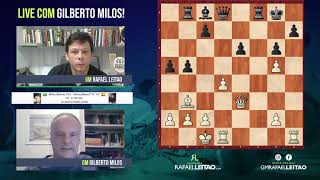During my career, I had the privilege of watching Garry Kasparov play a few times. And in several of these games he repeated a macabre ritual (for his opponents).
Kasparov arrived to play shortly before the game started. Impeccably dressed, always in a suit and tie, with quick steps and a serious expression. He greeted his opponent and sat down in a chair. On his wrist, an imposing and showy watch. The man exuded energy and confidence. He looked like a shark that had smelled blood.
I think many felt like giving up right there. Sitting face to face with Kasparov and still with that watch glimpsing at every move, every expression, every weakness.
The watch would come back to haunt most of these opponents. The thirteenth world champion would start the game with the watch on the table, staring at his opponent. When he felt that the game was in the bag, he would pick up the object and put it on his wrist again, as if to show his opponent that it was time to give up. It’s not the nicest gesture, but Kasparov and friendliness don’t go hand in hand.
Kasparov is fascinated by time. In addition to his “enchanted clock”, his books are titled “The Test of Time” and “My Great Predecessors”. In addition, he stopped playing very young – only 41 years old.
Another coincidence (if such a thing exists): Kasparov’s strong point has always been superior play in positions where the “time” factor was the most important. He himself draws attention to this in his books. Playing with the initiative, long-term sacrifices. His best game in this theme is the historic victory against Karpov when he sacrificed a pawn on move 8, as Black, and then played as if nothing had happened.
The watch has always been an extra source of fear for his opponents. But perhaps the moves on the board helped too.
Image credits: Wikipedia







No comments